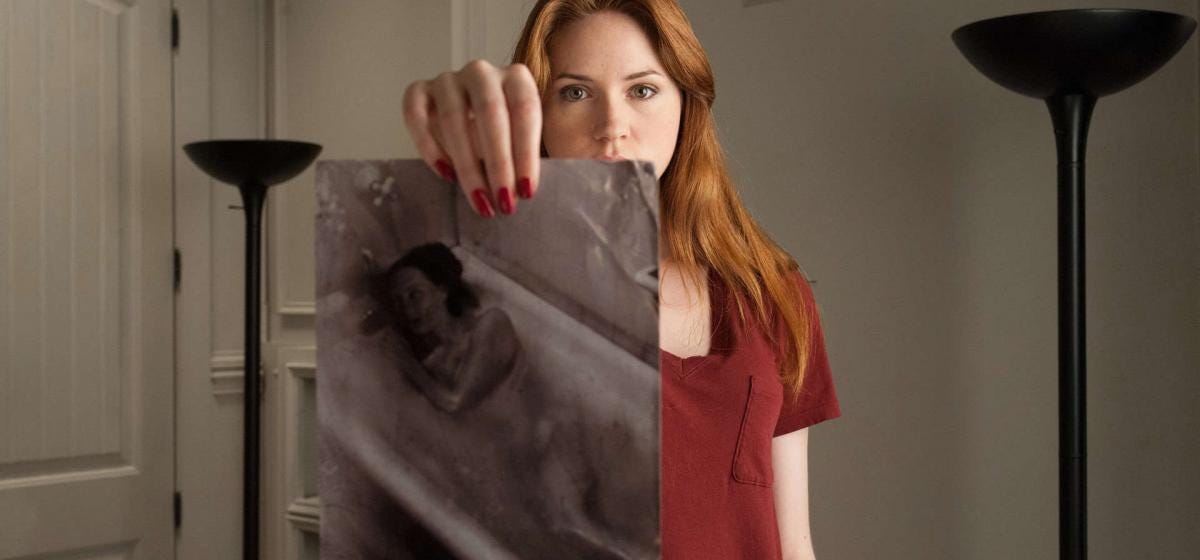Craft Services
With the strike on, I’m doing some hyper-focused Writers Panel episodes about craft. Next week, I’ve got one on world building. Upcoming episodes include chats about POV, collaborating with non-writers, thinking visually, and more.
As I plan these, please let me know what you want to hear about. What aspect of craft challenges you? What part of the process would you like to hear about from the pros?
Acting Out
As I tackle a handful of projects lately, I’m thinking a lot about second acts.
I had novelist and TV writer Dennis Lehane (Mystic River; The Wire) on the podcast not too long ago. “When you write anything,” he said, “the middle is where it's just a nightmare. It's the valley of darkness.” He continued:
David Mamet has a great line: The problems of the second act are the problems of the first act. Every misconception you had at the beginning will show itself in the middle. You don't know it when you [first think of the idea]. You’re just kind of like, “Hey, what a great idea and why is it nobody ever thought of that before?” Then you get the middle and you're like, “Oh, that’s why nobody thought of it.” They did think of it and it didn't work.
”Nobody writes for the second act,” says Marc Bernardin (Star Trek: Picard; Castle Rock). “That fourth act? The story wind is in your hair and you can see where the ending is… You feel like it’s inexorable and you're getting there. The story has its own momentum. And you're like, This is great. I'm barely holding on. That’s when it's fun. Everything else is work.”
Second Guessing
Why are second acts so difficult?
Well, third acts are all pay-off. That’s easy.
And first acts… set-up is the fun part, right? You’re introducing a world, your characters, their goals, and then, at the end of that first act, you throw some obstacle at them that changes their status quo and complicates achieving that goal.
In Act Two, you’ve got to put your character through their paces in attempting to overcome that obstacle, all while raising the stakes and revealing more about the character(s) and world. Jay Faerber (Supergirl) quotes the late, great Stephen J. Cannell, creator of (among other enormous hits) The Rockford Files, The A-Team, and 21 Jump Street, on television structure:
In my first act I put my hero up a tree. In my second act, I throw rocks at him. But in my third act, I drop a house on him. In my fourth act I get him out of the tree.
Cannell makes it sound—and look—so easy. But it’s that middle part, throwing rocks at your hero then dropping a house on him, that is so difficult. It’s the part that gives me paralysis, sometimes, unable to begin because I’m dreading figuring out how to not make it repetitive, or boring, or repetitive.
When Greg Mottola was writing Confess, Fletch, he struggled with his second act. “You lead the audience in one direction to then reveal something else and, you know, sort of drop in clues and dead ends and red herrings and all the things you need to keep the audience engaged enough that they are part of the fun of the mystery. It was very tricky to figure out how how to balance all of that that without having just endless exposition.”
Stealing Second
I’m working on a story right now that has me dreading its second act. The story is about a guy who does something that makes a kind-of ghost attach itself to him. It took me about a year to figure out that I needed to figure out what that kind-of ghost wants. Now I’m at the part where I need to figure out how my guy figures out what the kind-of ghost wants.
The good news is, no story is completely new. You can look at how good movies structure their stories and take inspiration from those. Or just steal them.
I realized not too long ago that the structure I was straining at is basically the structure of many ghost movies. Ghost movies tend to break into two kinds of structure: one is “we have a ghost, now let’s deal with it.” This is Poltergeist, It Follows, or The Babadook.
The other ghost story structure is the kind I’m looking at. “We have a ghost, now let’s find out why, so we can get rid of it.” This is The Conjuring, The Changeling, Candyman, or The Ring. I’ve seen The Ring a few times, and it always works for me. So, now I’m watching it again to see why it works.
As it happens, when I chatted with Jason Fuchs (Wonder Woman) way back in 2013, he was going through a similar dilemma and found the same source of inspiration. “The second act of The Ring is so perfect,” he said.
It’s so perfectly paced. It is the best version of an Act Two in a thriller. Naomi Watts is on a mission, she’s trying to figure out who that girl in the video is, and it’s just revelation after revelation after revelation. Every so often you get a great supernatural visual beat, like when she’s watching a frame of camera footage, and there’s a fly. She pauses it, and it looks like the fly is in the footage. When she pauses it the fly stops moving. Then she looks closer and the fly’s wings kind of flutter. And she moves closer, and the fly flies off into her face.
It’s horrible. It’s great. It’s just really well structured.
Don’t be afraid to cop someone else’s structure! Writing a heist movie? No one did it better than Ted Griffin with Oceans 11. A rom-com? Check out Notting Hill or When Harry Met Sally… A thriller? You could do a lot worse than copy Three Days of the Condor or The Taking of Pelham 1-2-3, both taut and character-driven without any fat. The point is, once you apply your own story to the beats of an existing structure, it’ll become your own. The details will change, you’ll shift scenes around, your climax will be the pay-off to your movie, will provide catharsis for your characters.
Second Helping
What got me thinking seriously about second acts and the challenges they pose were two pieces of advice I received on the podcast. These came as my writing partner and I were making an earnest effort to commit more fully to features, where second acts can make or break a story. (They’re important in TV pilots, of course, but so much of pilots is set-up).
The first came from Ed Solomon (the Bill & Ted movies; No Sudden Move; Now You See Me), who said, “Act Two can be made simpler if you divide it into bite-sized chunks.”
Often what I'll do is I'll divide it into three little mini-movies or three little mini acts or five little sequences. I would essentially define these as: a character wants something or thinks something or the viewer is thinking something. Then there's a series of scenes or partial scenes leading up to a moment where that changes… a reversal or a switch happens, or a new piece of information or something changes that.
You imagine slalom posts down a really steep hill that is full of fog and it's snowing, but you can see the flags. If you set those flags for yourself and then write [the sequences] knowing: this is a 12 page sequence, and this is a 14 page sequence. This is an 18 page sequence, and another 12 page sequence. And now you’re in what you would call the third act. It makes it a lot easier. You set those signposts. They're like trail markers.
Jeff Howard, who has done incredible work on his own and with writer/director Mike Flanagan on Oculus, Ouija: Origin of Evil, The Haunting of Hill House, Midnight Mass, and more, broke open my brain and the skulls of the rest of the panel, when he talked about his and Flanagan’s approach to the difficult second act. Their method works particularly well for horror, but it can be applied to most screenplays, which clock in around 100 pages.
We do a four-quadrant instead of a three-act structure.
The first quadrant is all the stuff from Act One, like 25 pages: the person, their personal problem, their global problem.
The second quadrant, that second 25 pages, is basically: they got a personal problem, but the world problem [the horror-thing, ie, the ghost, monster, etc] is sort of overtaking them, and they fail completely at the world problem because they're so obsessed with their personal problems that they can't really get ahead.
And then at midpoint, the two things slam together. So in like the third quadrant, they put aside their entire personal problem to focus only on the world problem. And they come so close to solving it before it all dissolves and falls apart.
But then when they rise from the ashes for the final part—the fourth quadrant or the third act—the whole idea is that they've inadvertently solved their personal problem by just putting it aside and focusing on the world problem.
I remember, after having this conversation with Jeff, re-watching Oculus, which is a very good movie and which follows precisely their four-quadrant storytelling structure. In fact, at the 52-minute mark, with 52 minutes remaining, the exact mid-point, the two main characters actually say “we have to work together.”
This copying, breaking into sequences, using a four-quadrant rather than three-act structure, is all very helpful, sure. They’re ways to trick or help your brain into doing the hard work of building the scaffolding of your story.
But Jeff adds what I think is the most important thing to remember when writing. “Hopefully,” he says, “nobody watching can figure out [all of that structural work] because you're hiding it with all the fun stuff that people get sucked into and pay attention to.”
That, of course, is the art of writing: hiding the posts and beams that provide the structural support of your story. They shouldn’t feel the work you’ve put in building the rollercoaster. They should just enjoy the ride.








Thank you for this, second acts are a real struggle bus.
so good.
when i was younger i tried to be a painter and noticed that process had that universal joseph campbell belly of the whale arc, too.
i also noticed when writing through midpoint, i'm able to get to the third act when i set aside my personal problem to tackle the script. and i end with another finished pilot and my dad and i are talking again